| Classe | Plage de PNBV | Utilisation typique |
|---|
| 1–2 (Lumière) | Jusqu'à 10 000 lb (jusqu'à ~4,5 t) | Camions légers/fourgonnettes (par exemple, camionnettes, petites fourgonnettes de livraison) pour le transport de consommation et urbain. |
| 3–6 (Moyen) | 10 001 à 26 000 lb (~4,5 à 11,8 t) | Les camions de poids moyen (grandes fourgonnettes, camions-caisses, petits autobus, camions utilitaires) sont utilisés pour le transport de marchandises et les services régionaux. |
| 7–8 (lourd) | 26 001 à 80 000+ livres (~11,8 à 36,3 t) | Les camions lourds (tracteurs-remorques, camions à benne basculante, bétonnières) sont conçus pour le transport longue distance et les marchandises lourdes. |
La catégorie de poids influence la conception des véhicules : les catégories plus lourdes utilisent des châssis plus puissants, des essieux supplémentaires et des suspensions plus robustes. Dans l'ensemble du secteur, les professionnels de la logistique choisissent la catégorie de camion en fonction du poids de l'expédition. Pour les expéditions internationales, il est crucial de respecter les limites locales. Aux États-Unis, la loi fédérale limite généralement le poids total autorisé des semi-remorques à 80 000 lb (36 000 kg) sur les autoroutes inter-États. En revanche, les limites de l'Union européenne sont plus basses : un semi-remorque européen standard est limité à 40 tonnes (environ 88 000 lb) de poids brut et 2,55 mètres (8,37 pieds) de largeur. Ces réglementations régionales façonnent la conception des camions et les différents types de camions utilisés dans le commerce mondial. Par exemple, les trains routiers « jumbo » américains (plusieurs remorques) sont rares en Europe en raison de ces limites, tandis que les camions européens privilégient l'efficacité aérodynamique pour maximiser les charges dans des dimensions plus réduites.
Types de camions courants par cargaison et fonction
Au-delà de la catégorie de poids, les camions sont classés selon leur fonction de chargement. La plus courante types de camions pour le fret inclure:
Camions à plateau: Ces plateformes sont ouvertes et plates, sans côtés ni toit. Elles sont idéales pour les charges surdimensionnées ou irrégulières. Elles permettent de charger facilement de gros engins de chantier, des machines, du bois, des tubes en acier et d'autres objets volumineux. Comme rien n'obstrue la plateforme, même des marchandises très hautes ou très larges peuvent être transportées. Par exemple, les entreprises de construction utilisent des plateformes pour transporter des poutres et des tubes lourds, et les installateurs de panneaux solaires les utilisent pour transporter des panneaux.

Camions réfrigérés (reefer): Ces camions logistiques disposent de remorques isothermes et réfrigérées. Elles transportent des denrées périssables nécessitant un contrôle strict de la température : produits frais, produits laitiers, viande, produits pharmaceutiques et autres produits soumis à la chaîne du froid. L'unité de refroidissement d'un camion frigorifique maintient une température constante tout au long du transport. Cela permet aux épiciers et aux distributeurs alimentaires d'expédier des aliments surgelés ou des vaccins sur de longues distances sans risque de détérioration.
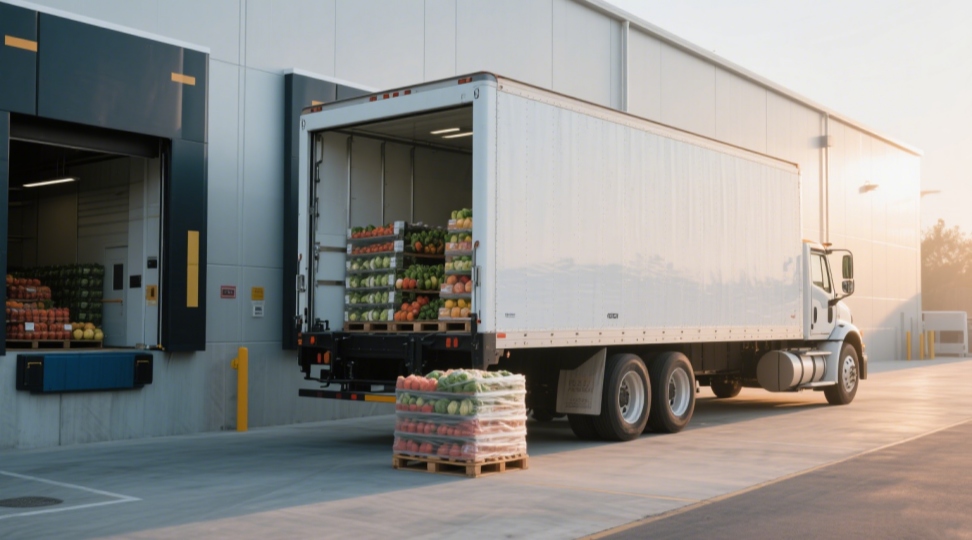
Camions droits/conteneursÉgalement appelés camions fermés ou fourgons, ils sont dotés d'un châssis rigide unique ; la cabine et le fourgon forment une seule unité. Les fourgons vont généralement de la petite fourgonnette de 3 mètres à la camionnette porteuse de 8 mètres. Ils sont largement utilisés pour les livraisons locales, les camions de déménagement et la logistique du dernier kilomètre. Une camionnette fermée offre une protection contre les intempéries et une sécurité accrue pour le fret palettisé ou les biens de consommation. Les camions porteurs sont plus faciles à manœuvrer en ville que les semi-remorques plus grands, ce qui les rend populaires pour les livraisons urbaines d'électronique, de vêtements, d'électroménager, etc.

camions-citernesCes camions-citernes sont spécialisés dans le transport de liquides et de gaz. La zone de chargement est une citerne cylindrique étanche, souvent en acier inoxydable ou en aluminium. Ils transportent du carburant, des produits chimiques, du lait, de l'eau et d'autres liquides en vrac. Des revêtements ou des isolants spéciaux peuvent être utilisés selon le produit (par exemple, liquides de qualité alimentaire ou thermosensibles). Le transport de matières dangereuses nécessitant une sécurité accrue, les conducteurs de camions-citernes sont spécialement formés et les citernes doivent respecter des réglementations strictes. Par exemple, les compagnies pétrolières utilisent des camions-citernes pour transporter de l'essence et du diesel, tandis que les usines chimiques les utilisent pour transporter des acides ou des solvants.
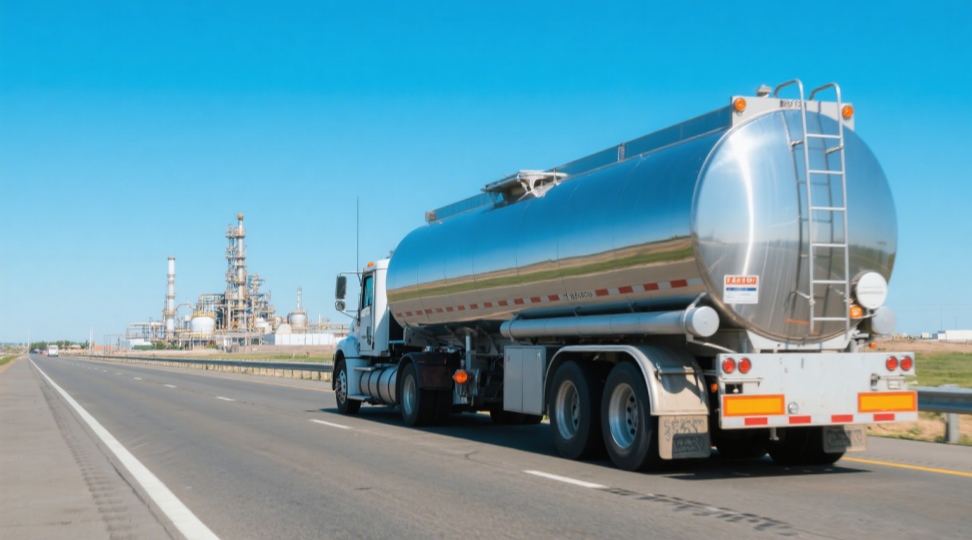
La configuration de chacun de ces types de camions peut varier. Par exemple, plateaux sont disponibles en versions standard, à plateau rabattable ou à double plateau pour gérer des charges plus hautes. Camions frigorifiques Les camions-caisses peuvent être à compartiments simples ou à températures multiples. Ils peuvent être équipés de hayons élévateurs ou de portes latérales pour un chargement flexible. différents types de camions répondre à des besoins de fret spécifiques – choisir le bon système optimise la sécurité et l’efficacité.
Au-delà des quatre grandes catégories, il existe d’autres camions spécialisés dans la logistique du fret :
Camions à benne basculanteCamions lourds à benne basculante hydraulique. Utilisés dans la construction et l'exploitation minière, ils transportent des matériaux en vrac (sable, gravier, débris de démolition) et déchargent en inclinant la benne.

transporteurs de voitures:Remorques à plusieurs niveaux pour le transport de véhicules (voitures, camions, tracteurs) entre usines, concessionnaires ou ports.
Remorques à plateau surbaissé: Plateaux extrêmement bas pour équipements très hauts/lourds (par exemple, grues, bulldozers).
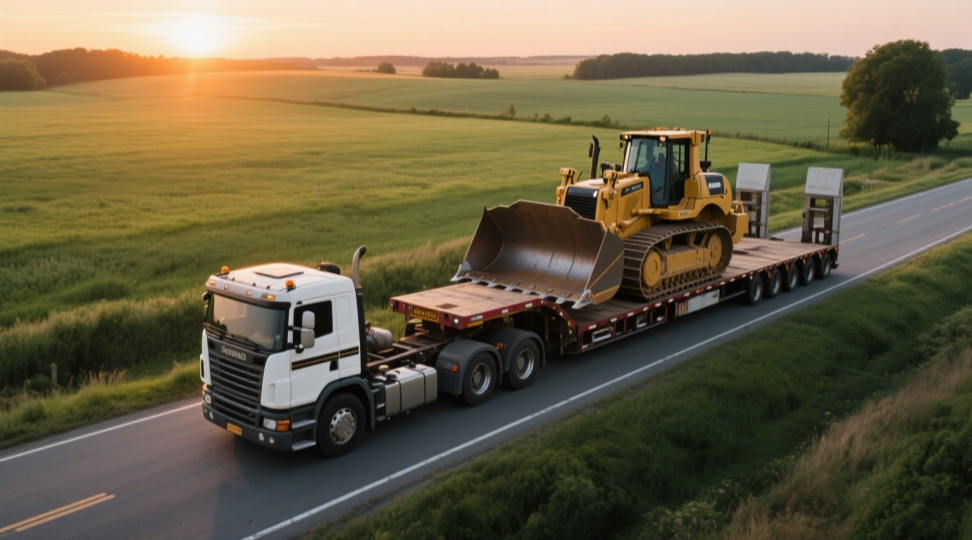
Remorques en vrac (sec ou liquide):Remorques avec trémies ou réservoirs pour ciment en vrac, céréales ou liquides ne nécessitant pas de confinement rigide dans une citerne.
Camions spécialisés: Bétonnières, transporteurs de bétail, camions-grues, etc., chacun construit pour un besoin industriel spécifique.
Par exemple, camions à benne basculante Il s'agit d'un sous-type de camions lourds utilisés dans les secteurs minier et de la construction pour transporter des matériaux en vrac. Ils sont dotés d'une benne ouverte relevable hydrauliquement pour un déchargement rapide. Camions fourgons Les camions-caisses (semblables aux camions porteurs) sont généralement des camions fermés de taille moyenne, utiles pour le transport local de marchandises. Leur carrosserie carrée ou rectangulaire facilite le chargement des palettes. Ces véhicules sont très courants dans les flottes de livraison urbaine et les services de déménagement.
Réglementations mondiales et variations régionales
Le transport international ne se limite pas au choix du type de camion ; il implique également le respect des réglementations régionales. Les limites de taille et de poids varient d'un pays à l'autre. Par exemple, la législation américaine limite généralement les camions de fret interétatique à 80 000 lb (36,3 tonnes métriques) poids brut et un maximum de 16 mètres pour les remorques. La largeur est généralement limitée à 102 pouces À l'échelle nationale. En revanche, les règles de l'UE fixent un maximum de 40 tonnes Le PTAC (environ 88 000 lb) et la largeur sont limités à 2,55 mètres pour les camions standards. La hauteur est généralement limitée à 4,0 m. Ces contraintes influencent la conception des camions : les camions européens ont souvent des cabines plus longues pour les chauffeurs en raison de remorques plus courtes, tandis que les camions américains peuvent utiliser des remorques plus longues sous les ponts.
Même au sein des régions, les règles varient. Certains États américains autorisent des charges plus lourdes ou des remorques plus longues sous réserve de permis. Comprendre ces différences est crucial pour les transporteurs internationaux de fret. Une expédition de Chine vers l'Europe, par exemple, doit utiliser des camions conformes aux normes européennes une fois en Europe. De même, les combinaisons comme les trains routiers (plusieurs remorques) sont courantes en Australie, mais illégales dans la plupart des pays de l'UE. En pratique, les prestataires logistiques internationaux contournent ces règles en utilisant des véhicules compatibles. types de camions à chaque étape ou en transférant la cargaison vers différents véhicules aux frontières.
Correspondance des types de camions avec le fret
Choisir le bon camion est une étape cruciale du transport. Les facteurs clés incluent le poids et les dimensions de la cargaison, la distance de transit, les exigences de manutention et le délai de livraison. Par exemple, si l'envoi est lourd ou volumineux, mais non fragile (comme des poutres en acier), un camion à plateau est idéal. Si les marchandises sont périssables ou sensibles (comme les produits pharmaceutiques ou alimentaires), un camion frigorifique est requis. Pour les petites livraisons urbaines ou les petits biens de grande valeur, un camion-caisse ou même une camionnette Sprinter pourrait suffire. Pour les liquides dangereux, seul un agent agréé camion-citerne ça ira.
Les équipes logistiques utilisent souvent des listes de contrôle ou des arbres de décision pour sélectionner les camions. Parmi les éléments à prendre en compte :
Volume et poids de charge:Est-ce que cela dépasse les limites de la camionnette ? (Si oui, passez à un camion porteur ou à un semi-remorque.)
Exigences particulières:La cargaison nécessite-t-elle un contrôle de température ou une manutention spéciale ? (Si oui, choisissez un camion frigorifique ou un camion-citerne, ou un camion avec hayon élévateur.)
Distance et itinéraires:Le camion circulera-t-il sur les autoroutes ou dans les rues de la ville ? (Les longs trajets nécessitent des semi-remorques de classe 8 ; le fret urbain peut utiliser des camions droits de classe 4 à 6 pour plus d’agilité.)
Conformité réglementaire:Y a-t-il des limites de longueur/poids sur l'itinéraire ? (Cela peut affecter la taille de la remorque ou la nécessité d'un permis.)
En analysant ces facteurs, les expéditeurs s'assurent que les types de camions sélectionnés correspondent au chargement. Une inadéquation peut entraîner des retards ou des dommages. Par exemple, la surcharge d'un camion plus petit peut dépasser les limites de poids et entraîner des pénalités ou des conditions dangereuses.
Les flottes modernes utilisent des logiciels pour optimiser cette sélection. Elles saisissent les spécifications et la destination du chargement, et le système suggère des types de véhicules, estimant les coûts et les temps de transit. DR Trans s'appuie sur ces outils pour recommander le type de camion optimal pour chaque expédition. Nos planificateurs de fret prennent en compte tous les facteurs mentionnés ci-dessus – caractéristiques du chargement, réglementations routières et délais clients – afin d'attribuer le camion le plus efficace et le plus sûr.
Comment DR Trans Offre une expédition mondiale efficace
Chez DR Trans, nous sommes spécialisés dans les solutions de fret international et faisons sélection du type de camion Une partie intégrante de notre service. Qu'il s'agisse d'un chargement complet de meubles à destination de l'Europe ou d'une expédition thermosensible vers l'Amérique du Nord, nous utilisons les camions et les transporteurs logistiques adaptés à chaque tâche. Voici comment DR Trans garantit son efficacité :
Sélection de flotte personnaliséeNous avons accès à un réseau mondial de transporteurs disposant de différents types de camions. Pour chaque réservation, nous attribuons le véhicule le plus adapté à la cargaison – des semi-remorques réfrigérées aux fourgons à grand volume – afin de garantir une capacité optimale.
Expertise intermodaleNous concevons des solutions porte-à-porte. Par exemple, les marchandises peuvent être acheminées par bateau vers un port européen, puis transférées vers des camions DR Trans conformes aux normes européennes en matière de dimensions. Ainsi, même les expéditions internationales bénéficient du type de camion idéal pour chaque segment.
Conformité réglementaireNotre équipe opérationnelle se tient informée des réglementations en matière de poids et de dimensions sur tous les marchés (Amérique du Nord, Europe, Moyen-Orient, etc.). Nous planifions les itinéraires et les véhicules de manière à minimiser les retards aux frontières et les permis supplémentaires.
Suivi en temps réelTous les camions DR Trans sont surveillés par GPS. Les expéditeurs savent précisément quels types de camions sont en transit et peuvent vérifier l'état de leur cargaison (ce qui est particulièrement important pour les conteneurs frigorifiques ou les marchandises dangereuses).
Portée mondiale, service personnaliséQue vous expédiiez de la Chine vers les États-Unis ou en Europe, DR Trans gère les formalités douanières, la documentation et la livraison du dernier kilomètre. Nos coordinateurs veillent au bon fonctionnement du camion choisi, de la prise en charge à la livraison.
En combinant une connaissance approfondie des classifications de camions avec la technologie et un réseau mondial de partenaires, DR Trans garantit que votre fret se déplace dans le véhicule le plus appropriéCette expertise réduit les délais de transit et de manutention, diminue les risques de dommages et, en fin de compte, permet de réduire les coûts, tout en maintenant une fiabilité élevée.
Conclusion
Dans la chaîne d’approvisionnement mondiale d’aujourd’hui, le succès dépend de l’utilisation des bons outils. types de camions pour chaque transport. Du terrain accidenté camions à plateau qui transportent des charges industrielles surdimensionnées avec précision camions frigorifiques Pour protéger nos aliments et nos médicaments, chaque catégorie de camion a sa fonction. Semi-remorques lourds, camions à caisses souples et transporteurs spécialisés travaillent ensemble pour transporter des marchandises à travers le monde. En comprenant les différents types de camions, les expéditeurs peuvent optimiser leurs itinéraires et leurs coûts.
Chez DR Trans, nous sommes fiers de cette connaissance approfondie. Nous adaptons nos services logistiques en utilisant les camions les mieux adaptés à votre cargaison, qu'il s'agisse d'un camion à rideaux coulissants pour le fret général ou d'un camion frigorifique à température contrôlée pour les denrées périssables. Notre vocation mondiale nous permet d'appliquer cette expertise sur tous les continents et de gérer les destinations de la Chine vers l'Occident avec la même compétence. Que vous expédiiez des pièces automobiles en Europe ou des produits électroniques en Amérique du Nord, DR Trans associe les camions logistiques adaptés à une planification de pointe. Résultat : un transport de marchandises efficace et fiable, répondant aux exigences actuelles, sans compromis.
Contactez DR Trans Contactez-nous dès aujourd'hui pour découvrir comment notre équipe professionnelle et notre flotte diversifiée peuvent optimiser votre prochaine expédition. Ensemble, nous assurerons que votre cargaison voyage en toute sécurité et efficacité, à chaque kilomètre.
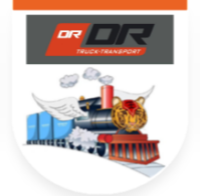












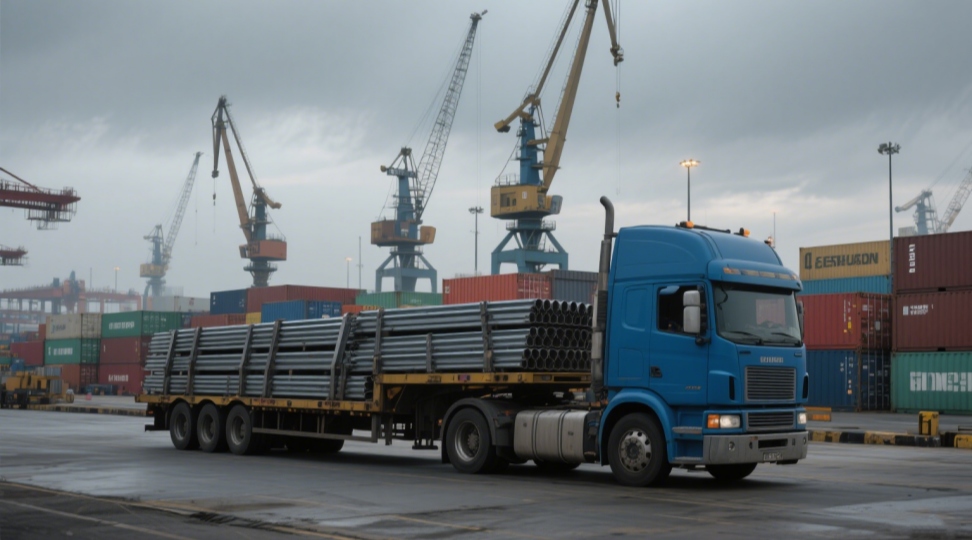







 IPv6 RÉSEAU PRIS EN CHARGE
IPv6 RÉSEAU PRIS EN CHARGE
